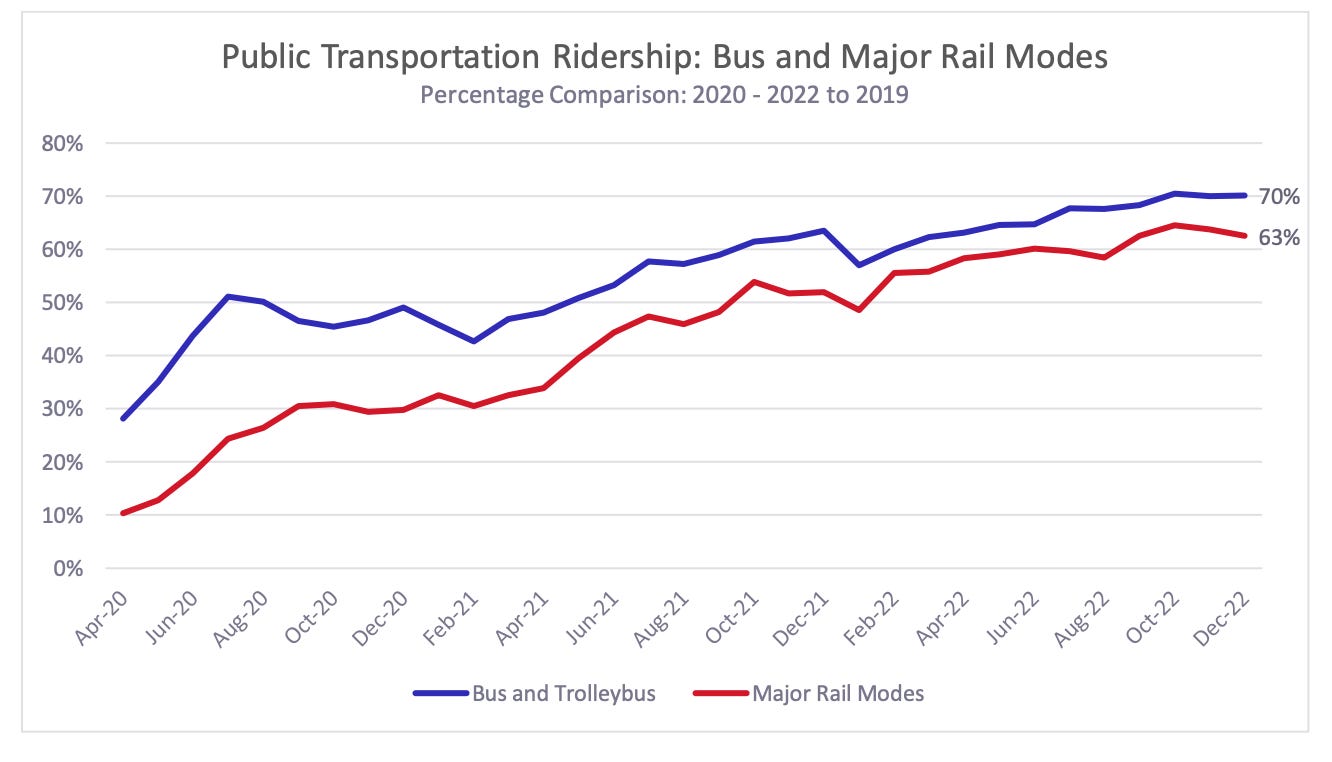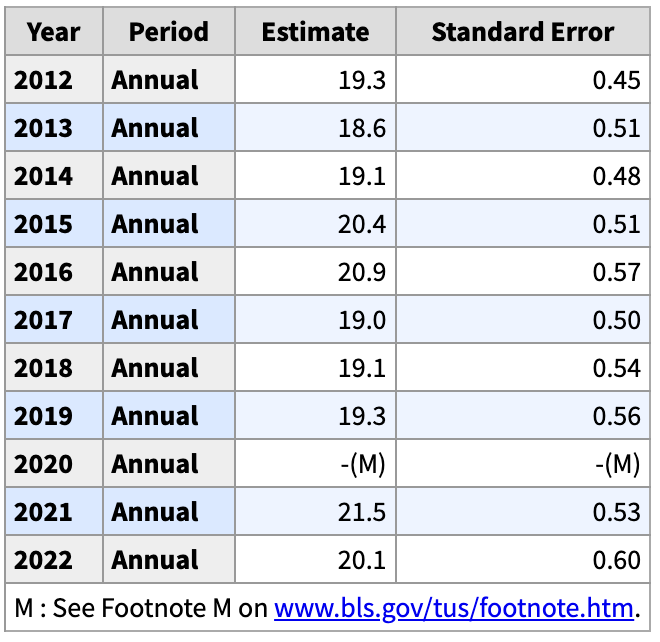5 Charts Explain How the Pandemic Changed Our Mobility
For the most part, things got worse :(
A report earlier this month shared some discomfiting news: Americans’ walking trips are down 36 percent since the pandemic. With a “walking trip” defined as walking 820 contiguous feet or more, the report notes that over the past three years, every metro and every state notched a decline in walking trips of 20 percent or more.
Of course, walking declined during lockdowns, but walking has not rebounded in 2022, suggesting there are fundamental shifts in mobility that may be with us into the future — unless we do something about it.
Because the report tracks walking trips rather than total steps, it has a different skew on things. For example, Orlando, where people walk around Disney Land, ranks only behind New York City in per capita walking trips.
The report doesn’t offer reasons for the declines, but I have a few theories. First, as I noted in a post a few weeks ago, retail fundamentally changed during the pandemic. Delivery became much more commonplace during the pandemic and that hasn’t subsided even though people no longer fear getting COVID from a store. Using Instacart as a proxy for delivery services overall, a massive shift happened in 2020 that has since stabilized. I’m guessing that a lot of Americans’ walking trips happened going to get food and other daily goods — even if those walking trips were just from a parking lot into a store — and delivery has eliminated those walking trips.
In addition to delivery, we’re grappling with the remote work phenomenon. If you’ve worked from home, you know how easy it is to stay at your desk for hours. You don’t need to walk to a co-worker’s office or grab a coffee at a nearby cafe. And because remote work eliminates the need for a commute, it eliminates a lot of opportunities for short walking trips — again even if just from a parking lot.
Walking trips are often part of the experience of public transit, particularly rail. But public transit use still remains down at least 30 percent since the pandemic and rail service has been particularly slow to recover. The short walk to and from the train station has also been eliminated for a portion of the population.
You may be thinking that remote work is actually helping people exercise more and drive less. But the data doesn’t quite bear that out. According to the Bureau of Labor Statistics, the percentage of people exercising in the U.S. only truly hit records in 2021. By 2022, the percentage of people exercising any given day was back at 20.1 percent, below previous highs in 2015 and 2016.
If you want to know what people are doing with the extra time they’re not spending on commuting — they’re sleeping more. The average American over 15 years old now sleeps 9 hours a day. This is probably due to the fact that we have a greater than ever population of people over 65.
Meanwhile, Vehicle Miles Traveled (VMT) is about the same level as it once was in 2019 – at more than 3 trillion VMT per month. We should cheer that the American per capita VMT is now lower, since it’s spread across a population of drivers that has increased by about 10 million people since 2020. But that only translates into about 40 fewer miles per month — or about one average round trip commute.
When remote work took off, people crowed about the sustainability benefits of remote work. But it seems they have not significantly materialized. People may be commuting less but they must be driving other places more. It’s almost as if the short walking trips people used to take on foot have been replaced by short driving trips that can be accomplished with a more flexible remote work schedule.
One reason people may be walking less is that people perceive it has become less safe to do so. Violent crime spiked during the pandemic, but across the country it is now actually .1 percent lower per capita than it was in 2019. That said, pedestrian fatalities have surged since 2019 and show no signs of abating. In that sense, walking has indeed become more dangerous.
The only bright spot in all of this mobility news is that bicycle usage remains up since 2019 and has stabilized at 37 percent more trips than before the pandemic. It’s a huge increase, no doubt in part accelerated by the growth of e-bikes during the same time period.
What should cities make of all this data? They should sound the alarms over walking and do everything possible to preserve the gains in biking. Too few cities are doing either of these things.
The benefits of walking are so well documented — it’s a zero carbon mode of transportation, it benefits people’s physical and mental health, and it can promote the economy. Moreover, since walking benefits everyone from a young child to a senior citizen, from rich to poor, commuter to tourist, it’s an equitable strategy. But big picture discussions about the direction of our cities rarely acknowledge that there are increasing barriers to people walking, like the the rise of delivery and remote work, and the decline of transit. Rather than focus on trying to manage delivery and remote work, what if cities put all their energy into making walking irresistible? A radically different and better city could emerge.












I'd love for my city (Albany, NY) to find ways to make walking irresistible. There is at least one pedestrian infrastructure improvement project happening in one of our main districts, but it feels so incremental and small.... not the big change we'd need to really incentivize walking more. I always go back to Jeff Speck's theory that to be irresistible, walks need to be useful, safe, comfortable, and interesting. I hope we can make some of these happen where I live!
The walking numbers don't feel right to me; all forms of active transport have been up, why is walking anomalous? in Vancouver, "Pedestrian: Walking trips increased to 28% of mode share, up from 26% in 2021, which is similar to pre-pandemic levels." In the UK, "Findings show walking is the only transport mode to increase during the pandemic and have more people walking regularly than pre-pandemic. This increase has been for mixed purposes, not solely for leisure purposes, and in June-21 17.4 % of the sample who were eligible to drive, increased the frequency they walked and also decreased their car use." (I couldn't find any American studies) During the pandemic the streets were full of people walking, it was one of the few things they could do. I am going out tonight and walking 24 minutes to the subway because I don't want to get on a crowded bus. Right now I am going to download that study.